Text
1945
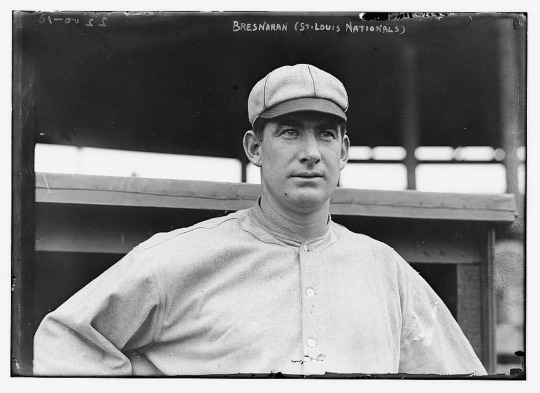
Roger Bresnahan
Christy Mathewson’s favorite catcher was also probably the best catcher of the deadball era. And probably the best position player on the New York Giants during his tenure there. The knock on Bresnahan is that he got in to the Hall of Fame because he’d just died in 1944, he got too much credit for popularizing shin guards or for whatever other non-deserving reason. Fine. JAWS ranks him as the 22nd-greatest catcher of all time. Nobody with similar career stats is in the Hall of Fame. But in 1945, they really only could have put in Mickey Cochrane, Gabby Hartnett or Wally Schang ahead of him. Maybe Deacon White. But Bresnahan had been associated with John McGraw in Baltimore and New York, not to mention Mathewson. Plus the fact that he had an outstanding World Series (.313 AVG, .500 OBP) during the Giants’ championship run in 1905. And people thought fondly enough of him after his death that they put him in. I think he only had three elite seasons, but I would have given him the N.L. MVP in 1903. Some people lose their mind over Breshanan’s inclusion. I don’t feel like it’s hurting anybody.

Dan Brouthers
Big Dan was probably the greatest slugger of the 19th Century. And he had the career home run record from 1887-1889. He won five batting titles and three slash line Triple Crowns during his career. He also killed a catcher in a collision at home during his amateur days, but was found innocent of any wrongdoing. I would have given him the National League MVP in 1882, 1883, 1886, 1887, 1889, 1892 and the American Association MVP in 1891 for a total of 7. JAWS ranks him as the 7th-greatest first baseman of all time. The Veterans Committee could have gone with Roger Connor first. But I guess it paid to be associated with John McGraw, who Brouthers (pronounced BROO-thers) played with in Baltimore in 1894 and 1895 and with the New York Giants in 1904. McGraw even gave him a job in the Polo Grounds press gate for over 20 years. Not knowing McGraw means he probably would have had to wait until people had easier access to stats thirty years down the road.
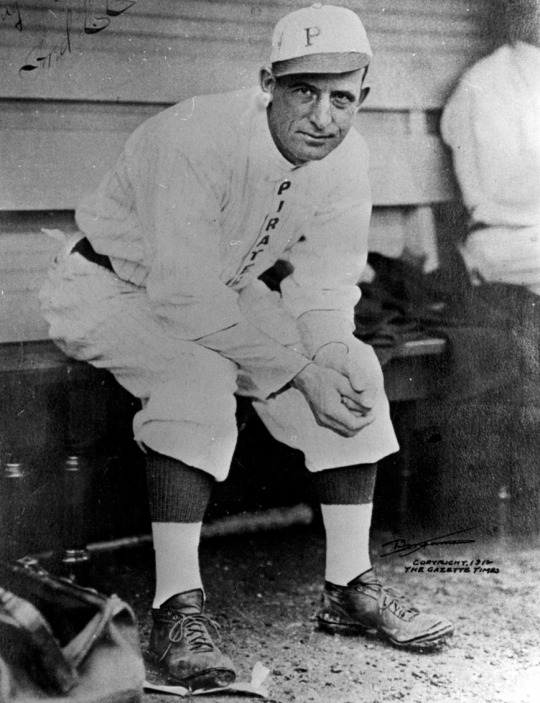
Fred Clarke
I’d say he played Scottie Pippen to Honus Wagner’s Michael Jordan, but with 4 pennants under his belt as player-manager, he was also Phil Jackson. Clarke began managing at age 24 and even had the all-time wins record for managers until it was broken by John McGraw in 1918. Just in case you didn’t think John McGraw was going to get mentioned again.
I’d say Clarke had six elite seasons as a player. JAWS ranks him as the #12 left fielder of all time. He went 5-for-5 in his first game in the Majors. And later in life he became wealthy by finding oil on his Kansas property. With the money, he became part-owner of the Pirates. And then became clubhouse poison in 1926 by actually sitting in the dugout and undermining the manager.

Jimmy Collins
He was considered the best defensive third baseman of his time, playing in on the edge of the grass to defend against the bunt. It strikes me as odd that nobody had thought of this before, but whatever. Somebody had to. And Collins is second all-time in put-outs from 3rd after Brooks Robinson. He wasn’t really a star hitter. I’d say he only had one elite season (1901). But in 1945, he was the second-greatest third baseman ever, after Home Run Baker. Now JAWS ranks him 20th and below standards.
Collins probably gets extra points as the first franchise manager of the Boston Red Sox. Collins’ Americans, as they were known (which included Cy Young, whom Collins recruited), won A.L. pennants in 1903 and 1904, won the first ever modern World Series in 1903 and then sat out the ‘04 Series when John McGraw (McGRAW!) refused to play them. In 1906, Collns was replaced by Chick Stahl as manager. Stahl, who couldn’t handle the pressure, committed suicide the same season.

Ed Delahanty
One of the game’s first power hitters was also one of its first great tragedies. Ed Delahanty was one of five Delahanty brothers to play in the Majors. And he was the best. Big Ed was the first to hit .400 in a season three different times, the second to hit four home runs in a game and the only man to win batting titles in both leagues. His .346 average is 5th all-time. He had 9 elite seasons and I would have awarded him the N.L. MVP in 1893, 1895, 1896 and the A.L. MVP in 1902. JAWS ranks him as the 6th-best left fielder of all time.
Not that many people can say they’ve broken a third baseman’s ankle with a batted ball. And not that many people have gotten stuck in a doghouse trying to retrieve a ball, which resulted in an inside-the-park home run either. Delahanty met his tragic end after a contract with the Giants fell through and he went on a months-long drinking binge. Apparently he got wasted and violent on a train, threatening passengers with a straight razor, until he was kicked off. While crossing the International Railway Bridge over the Niagara River, he either fell, jumped or was pushed and his body was later found at the bottom of Niagara Falls.

Hugh Duffy
After all these years, Duffy still has the single-season batting average record with .440 in 1894. Which is an insane batting average. And he was even thought to have won the Triple Crown that year, until some other RBI were found for Sam Thompson. Depending on who you ask. FanGraphs considers him a Triple Crown winner, BaseballReference does not. Either way, it’s one of only two elite seasons for Duffy. I’d say over his own career, he was the second-best center fielder after Billy Hamilton. JAWS ranks him the 46th-best center fielder of all time. I mean, for the 19th Century, he was 11th in fWAR among all position players. Not bad for a guy Cap Anson initially mistook for the batboy when he arrived in Chicago in 1888.

Hughie Jennings
For a very brief moment in time, Hughie Jennings was the star player and captain of the legendary Baltimore Orioles teams of the late 1890’s and he might have even been the best player in baseball during that stretch. Part of his success was due to his willingness to get hit by pitches. He took one for the team and then took first base due to an HBP 51 times in 1896, which is still a single-season record. And the 287 hit-by-pitches in his career is also an all-time record. That obviously wasn’t without its consequences. Hard-throwing right-hander, Amos Rusie, once beaned Jennings in the head in the third inning of a game. And Jennings apparently managed to finish that game. But as soon as it ended, Jennings collapsed and remained unconscious for three entire days.
Head injuries would actually be a common theme in Jennings’ life. He actually had multiple skull fractures over the years, from diving into empty pools and a near-fatal car crash in 1911. But the most consequential injury to his playing career was probably throwing out his arm in 1898. That’s when the elite play and stellar defense stopped. JAWS only ranks Jennings as the 29th-greatest shortstop of all time. Only two of the ten most-similar players in career stats are in the Hall of Fame. And if the Veteran’s Committee wanted to pick a worthy shortstop, they could have easily gone for George Davis, Bill Dahlen, Bobby Wallace, Joe Tinker or even a few others. So I’m guessing Jennings’ selection had as much to do with his managing career as it did with his time at short.
From 1907-1920, Jennings was the manager of the Detroit Tigers. Which means he was Ty Cobb’s manager. I mean, Jennings also had Sam Crawford and Harry Heilmann too. But that was Cobb’s team. And Jennings let Cobb be Cobb. His first three seasons at the helm in Detroit were pennant winners. All in losing efforts (twice to the Cubs and finally to Pittsburgh). But Detroit is also where Jennings became known as “Ee-Yah” for his trademark yell from the third base coaching box. Jennings’ wacky antics also included other variations of noises, horns, gyrations and dances. He was even suspended for taunting opposing players with a tin whistle.
Despite all of his antics, Jennings was still considered a great manager. And he occasionally still played in a game or two over the years. During the infamous game in 1912, when the entire Tigers team boycotted in solidarity with Cobb, Jennings inserted himself to pinch hit. When the umpire asked him who he was subbing for, Jennings responded, “None of your business.”
Jennings, who was also the best man in John McGraw’s wedding, also did some coaching for the New York Giants in the early 20’s. And he managed during the time McGraw fell ill. Eventually the head trauma might have gotten the better of him. Jennings suffered a nervous breakdown in 1925 and then died of meningitis in 1928.
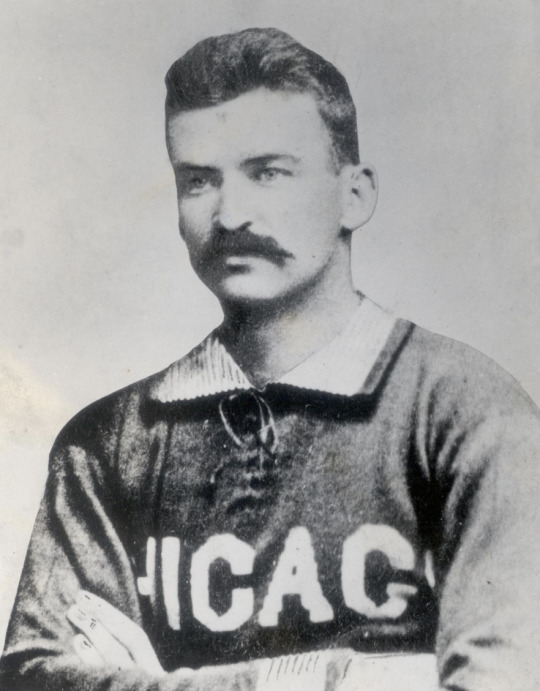
King Kelly.
If Kelly was a quiet, teetotaling churchgoer, he might have gone on to 19th Century baseball obscurity. Thankfully, he was none of those things. It was pretty rare for Kelly to be the best player on his own team (then again, his teams won 9 pennants, so his teams were kinda stacked). There were only a handful of times he was the best catcher in baseball or the best outfielder in baseball. Contemporaries like Buck Ewing and George Gore were better at their respective positions. But Kelly probably had 5 elite seasons. And I would have given him the NL MVP in 1884 (which was also the first of his two batting titles). He’s only the 7th-best player in his own specific era (1878-1893) after Roger Connor, Cap Anson, Dan Brouthers, Jack Glasscock, Ewing and Gore. And he’s currently listed as the 36th-greatest right fielder of all-time on JAWS, well below standards.
But this is the Hall of Fame and Kelly sure as shit was famous. He was also as innovative as he was tricky. The hit-and-run, the hook slide, catchers backing up first base and runners leading off a base have all been things said to be popularized by Kelly. So are the wearing of a glove and a chest protector as catcher. So are fouling off pitches on purpose to tire out an opposing pitcher, and cutting bases when the only umpire wasn’t looking.
Kelly also ‘wrote’ the first baseball autobiography. He popularized signing autographs. He became one of the first ballplayers to work in vaudeville. And when the White Stockings shipped Kelly off to Boston for $10,000, it was a record amount and everyone freaked out about it. America’s first pop song was “Slide, Kelly, Slide”, which also became a movie. “Casey at the Bat” is rumored to be about him. Every Irish pub hung his photo. He was a handsome, mustachioed Irish-American legend. And that sweet combination of skills, innovation and fame is what got him to Cooperstown.

Jim O’Rourke.
“Orator Jim” is another 19th Century player who was probably more famous than he was spectacular on the field. He was pretty good in his heyday. JAWS ranks him as the 37th-best left fielder of all time. There were a few times he was the best first baseman or outfielder in the old National Association. Or the best player on one of his Boston teams in the National League. He did have 8 elite seasons. And he won a batting title and three home run titles (before that was really a thing). It’s just that he played on those stacked Boston Red Stockings teams that won 5 pennants in the 1870s. Then again for the Providence Grays and again for the New York Giants.
O’Rourke’s fame might stem from attending Yale Law when most of these guys were rough-and-tumble immigrant kids. He also collected the first base hit in National League history in 1876. And then he played in the minor leagues well into his 50’s. His friend, John McGraw (!) called him up for a game in 1904 when O'Rourke was 54 years old. And he caught a full minor league game when he was 60.
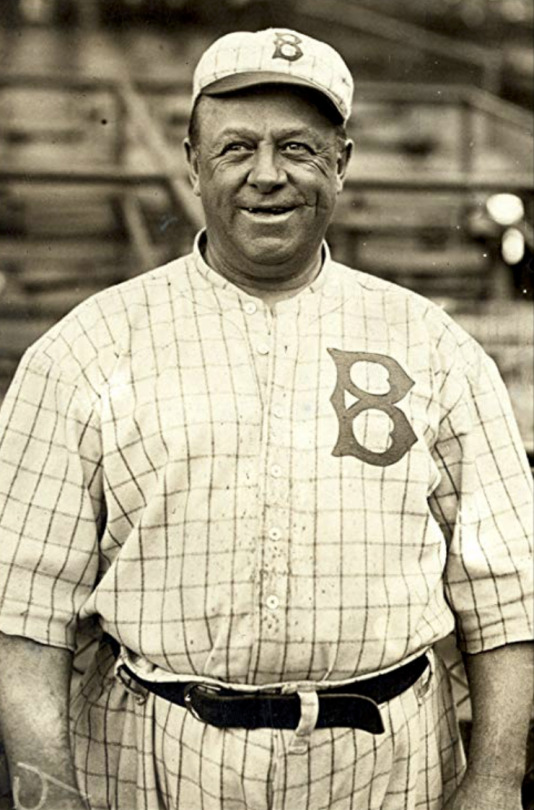
Wilbert Robinson.
From 1886-1902, Robinson served as a mediocre catcher for various American Association and National League teams, where he was the first catcher to play directly behind the batters at all times. Then he went on to become business partners with John McGraw in Baltimore, succeeding him as manager of the Orioles in 1902. Besides McGraw, that team also featured Roger Bresnahan, Joe Kelley and Joe McGinnity. From 1903-1913, Robinson served as McGraw’s pitching coach with the New York Giants (a team which included Christy Mathewson, McGinnity and Rube Marquard). And then from 1914-1931, he was manager of the Brooklyn Robins, a team which was named after him. That Brooklyn team won pennants in 1916 and 1920, included Hall of Famers Casey Stengel, Zack Wheat, Rube Marquard, Burleigh Grimes, Dazzy Vance, Max Carey, Rabbit Maranville, Dave Bancroft, Al Lopez and Ernie Lombardi and left Robinson 3rd all-time in National League managerial wins after McGraw and Fred Clarke.
Snubs: Brouthers, Delahanty and Clarke were good choices, But if you’re going 10 players, round it out with Roger Connor, George Davis, Kid Nichols, Bill Dahlen (who isn’t even in the Hall), Frankie Frisch, Sam Crawford and Billy Hamilton.
0 notes
Text
1944
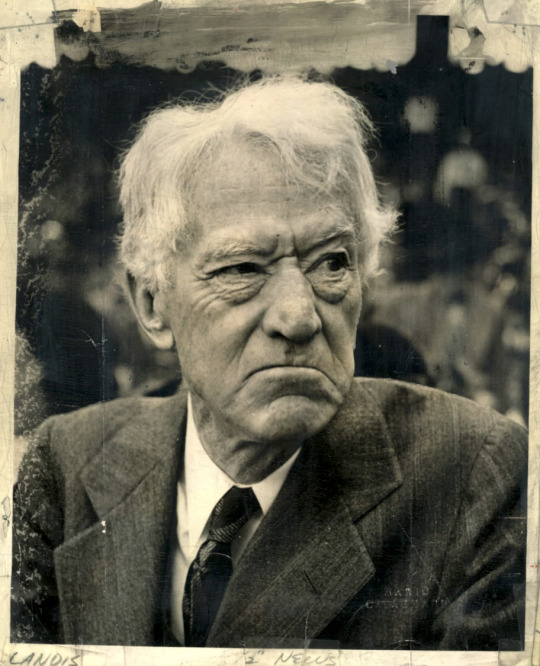
Kenesaw Mountain Landis
After the public had learned about the 1919 Black Sox Scandal, the Major League owners decided they needed a strongman leader to crack down on gambling and clean up the game. So they chose a flashy, Teddy Roosevelt-appointed federal judge who had gone after John D. Rockefeller and Standard Oil. Most of his theatrics had been reversed by higher courts, but that was besides the point. Kenesaw Mountain Landis (named for the Civil War battle where his father was injured) became the first commissioner of baseball in 1920. And he remained in his position of unchecked power until his death in 1944.
Landis’ first order of business was banning all eight accused members of the 1919 White Sox from baseball. Even after evidence vanished and the men were found innocent in court. He even banned Buck Weaver, who was only at the meetings, but hadn’t actually thrown any games. Before Landis came in, it didn’t really pay to be honest. After the fate of Weaver, players became informants, the seediest side of the game basically stopped cold and public confidence in baseball was restored. Over the course of his tenure, 18 men in total would be banned from baseball for life.
In the time after World War I, when Americans wanted a return to normalcy and Babe Ruth instated the live ball era, Ruth and Landis were the two most powerful men in baseball. And they eventually went head-to-head in a battle over the right to barnstorm in the offseason. Landis would win. When Ruth initially ignored Landis’ barnstorming ban, the commissioner reportedly said, “Who the hell does that big ape think he is?” to which Ruth responded, “Aw, tell the old guy to go jump in a lake.” Ruth was suspended. And he wound up getting summoned and Lectured by the old guy for over two hours. After accepting the suspension, Ruth stated, “He sure can talk.”
One of the main knocks against Landis, of course, is his seeming refusal to eliminate the color line. And yeah, Jackie Robinson didn’t become part of the Dodgers organization until after Landis’ death. There are varying reports on how the commissioner felt about integrating the game. He cancelled a game between the Kansas City Monarchs and Dizzy Dean’s All-Stars in 1942 after the Monarchs had won the first game and were outdrawing crowds for Major League games. Bill Veeck also claims that he attempted to purchase the Philadelphia Phillies in 1942 and stock the team with Negro League Stars until Landis blocked the sale.
It could all be bullshit. The truth is, the owners didn’t want integration any more than Landis did. And you probably didn’t have to look to hard to see groups of people Landis proudly despised. He wasn’t too shy about how he felt about draft dodgers, socialists and/or Germans during the war. Whatever the case, Landis was voted into the Hall of Fame two weeks after his death in 1944 and the league MVP awards were named after him. Without Landis, the league might not have even been around for Robinson to integrate in the first place. He was hired to clean up the game. And that’s exactly what he did.
0 notes
Text
1942

Rogers Hornsby
Hornsby put up joke numbers. That’s the only real way to describe it. 7 batting titles. Two Triple Crowns. 7 slash line Triple Crowns. He hit over .400 three different times, including .424 in 1924 with a .507 on-base percentage to boot. He had a .756 slugging percentage the following year. And in 1922, he hit .401 with 42 home runs. He’s the only player to ever do that. When a rookie pitcher complained about the strike zone while Hornsby was up to bat, umpire Bill Klem reportedly shot back, "Son, when you pitch a strike, Mr. Hornsby will let you know.”
When you adjust for era (OPS+), Hornsby is still probably the 5th-greatest hitter of all time after Babe Ruth, Ted Williams, Barry Bonds and Lou Gehrig. And, I guess, depending on what Mike Trout ends up doing. Hornsby also has the second-highest career batting average after Ty Cobb. And JAWS ranks him as the greatest second baseman of all time.
He was elite in 14 different seasons. And I have Hornsby winning the N.L. MVP in 1917, 1920, 1921, 1922, 1923, 1924, 1925, 1927, 1928 and 1929. That’s 10 times. He won two real MVP awards in 1925 and 1929. And despite all of that, Hornsby somehow fell short of 3000 hits and some of the other counting number stats the Hall of Fame voters love.
He was apparently also a real sonofabitch. Hornsby managed multiple teams between 1925 and 1953, including the World Champion Cardinals of 1926. Hall of Famers who played for Hornsby include Jim Bottomley, Chick Hefey, Jesse Haines, Pete Alexander, Billy Southworth, Burleigh Grimes, Travis Jackson, Freddie Lindstrom, Edd Roush, Bill Terry, George Sisler, Kiki Cuyler, Gabby Hartnett, High Pockets Kelly, Hack Wilson, Billy Herman, Rick Ferrell and Satchel Paige. And yet nobody seemed to have liked him. In fact, it appears to be quite the contrary.
He fought Branch Rickey in the St. Louis clubhouse in 1923 after questioning one of Rickey’s managerial decisions. Bill Veeck Sr. released him for sending a player out to argue a call for him in 1932. That year the Cubs made it to the World Series, but voted to not give him any of the World Series money. When Bill Veeck Jr. fired Hornsby as manager in 1952, the St. Louis Browns sent him an engraved trophy to thank him. That’s decades of pissing people off.
Maybe he lost too much money gambling on horse races. Maybe the guy was just an asshole. But Rogers Hornsby could hit. And I guess at least he never went into the stands and beat up a guy with no hands.
Snubs:
If you’re going for just one player in 1942, yeah. Hornsby is a perfect choice.
0 notes
Text
1939
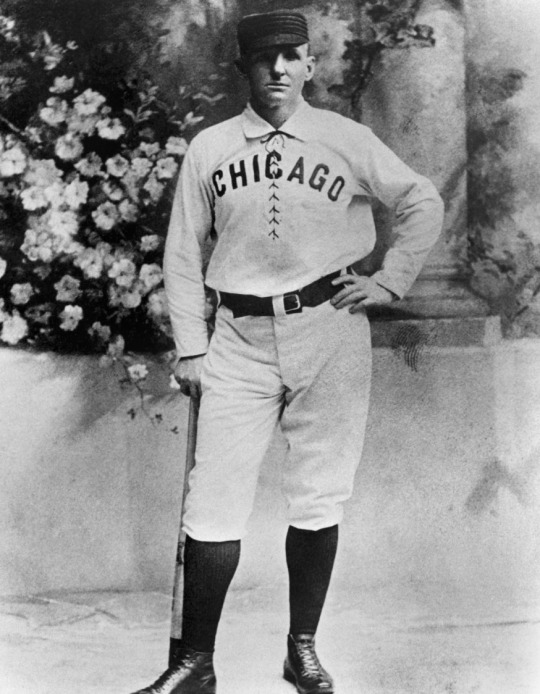
Cap Anson
Well, he was an old timey racist who refused to play against black players in 1883 and 1887 and might have also played a major role in establishing baseball’s color line that lasted until 1947. Which is disgusting. But he also played for 27 consecutive seasons and was one of the game’s first superstars as player-manager of the Chicago White Stockings and Colts. His teams won pennants in 1876 before he managed and then in 1880, 1881, 1882, 1885 and 1886 while he did. But yeah, he’s a racist.
Anson’s teams practiced aggressive base running and he may have innovated the hit-and-run, the practice of backing up other fielders, 3rd base coaches, signaling to batters, the two-man rotation and he (along with Al Spalding) also were among the first to institute spring training. As manager, he had King Kelly, John Clarkson, Hugh Duffy and Clark Griffith in Chicago. He also had George Davis and Amos Rusie for a brief stint with the New York Giants in 1898.
As a player, Anson was elite in 15 different seasons from 1873-1891. I would have given him the N.L. MVP in 1881. There’s a bit of an argument about how many hits he compiled, whether to count his National Association numbers and what to do with his numbers in 1887, when walks counted as hits and Anson walked 60 times. Personally, I think you should count the NA numbers and change the 60 hits to walks, which gives him 3,435. But however you slice it, Anson was the first member of the 3000 hit club. He won batting titles in 1879, 1881, 1887 and 1888. All while refusing to play against black players because it hurt his little racist feelings.
On top of all the history Anson made that I’ve already listed, I feel like it’s not insignificant that he also made that initial jump from Philadelphia to Chicago in 1876 (which he initially regretted), which caused the formation of the National League to begin with. And later in Anson’s long career, the players called him “Pop”. And when Spalding forced Anson out as manager after 1897, the Chicago team began being known as the Orphans. Because they lost their Pop.
He wasn’t always the best player on the White Stockings. And Roger Connor was probably a better contemporary first baseman. But he was the best player in baseball in the early 1880′s, he was one of the best players in baseball for a really, really long time, and JAWS ranks him as the 4th-best first baseman of all time. On the field, the guy is a deserved legend. Off the field, where he also bet on baseball, the guy was fucking trash. But it is fun to know that Anson was a business failure after his retirement and that he had to shut down his ginger beer company because they were exploding on store shelves. Character clause, my ass.
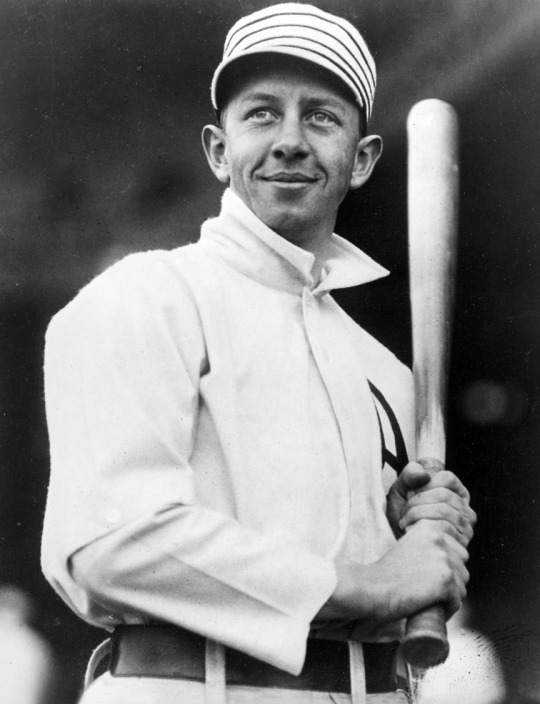
Eddie Collins
Goddamnit, it’s not getting less racist. Connie Mack’s ideal player was the best player on the second of Mack’s Athletic’s dynasties, was the best American League second baseman from about 1909-1925 and was the best second baseman in all of baseball until Rogers Hornsby came around in the Twenties. His A’s teams won pennants in 1910, 1911, 1913 and 1914 (winning championships in all but the last one). And after he was sold to the White Sox, he won pennants with “Shoeless” Joe Jackson in 1917 and 1919. He was 1-for-2 in that department, since, you know, the whole Black Sox thing.
Collins is seen as a clean player in that 1919 World Series. But he might have known something was up. I guess he’s given contradictory accounts of the whole thing. But unlike eight of his infamous teammates, Collins got to stick around. And he wound up playing for 25 seasons. He was even a player-coach on the 3rd A’s dynasty in 1929 and 1930, although Collins didn’t play in those World Series games.
Although he played in the shadow of Ty Cobb, Babe Ruth and Tris Speaker, there are years between 1909-1916 where someone could have argued Collins was the best player in baseball. He won the American League MVP in 1914. And between 1909 and 1925, I think he had 15 seasons where he was at least in the top 10 in his league. Often times 2nd or 3rd. I mean, on two separate occasions he stole six bases in one game. Collins was also the 6th member of the 3000 hit club. And JAWS ranks him as the 2nd-best second baseman of all-time after Hornsby.
The major issue I have with Collins comes from his time as GM of the Red Sox from 1933-1947. The dude didn’t like blacks, Jews or Catholics to begin with. But now he was in a position of power. And his policy, along with owner, Tom Yawkey, was to not hire black players. And they were actually the very last team in the Majors to do so. But they did have a sham tryout for Jackie Robinson and two other Negro League players in 1945 where either Collins or Yawkey yelled, “Get those n---- off the field.” This year the Red Sox renamed Yawkey Way in front of Fenway Park to Jersey Street and quietly removed plaques of Yawkey and Collins from the entrance to the stadium. Character clause, my left nut.
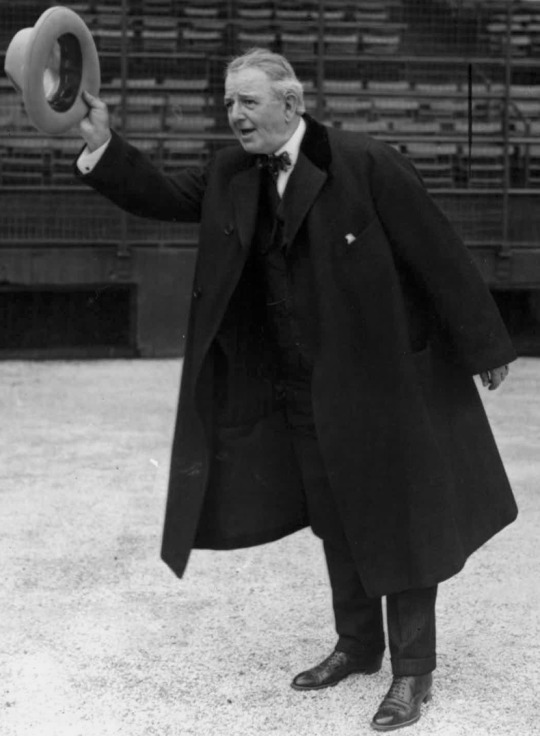
Charles Comiskey
Comiskey began his career in baseball as the 3rd-best player for the St. Louis Brownstockings of the American Association and that league’s 5th-best first baseman. He was the best first baseman in the AA in 1887, but Roger Connor, Cap Anson and Dan Brouthers might have had something to say about best overall that year. Despite his mediocre play, Comiskey is actually credited with being the first first baseman to play off the bag. Which seems impossible. But 19th Century baseball is fucking crazy.
Comiskey was player-manager from 1883-1894. His St. Louis team won AA pennants every year from 1885-1888. His teammates there included Tommy McCarthy and later Clark Griffith. He also managed Hugh Duffy in Chicago and Bid McPhee in Cincinnati.
After his stint as player/manager, Comiskey bought a team in Sioux City, Iowa, moved it to Saint Paul, MN and moved it again to Chicago, where they became the White Sox. Just in time for the beginning of the American League. His team won pennants in 1900 (in that league), 1901, 1906, 1917 and 1919, winning it all twice. Comiskey also saw the construction of his namesake stadium in 1910. And he owned the White Sox until his death in 1931. The list of men who donned a White Sox uniform for Comiskey include Hall of Famers, Eddie Collins, Ed Walsh, Ted Lyons, Ray Schalk, Red Faber, Luke Appling, Harry Hooper, George Davis, Johnny Evers, Clark Griffith, Chief Bender and Eddie Roush as well as Hugh Duffy and Frank Chance as coaches.
There is the whole Black Sox thing which tarnished Comiskey’s legacy. Unless it doesn’t tarnish your legacy to have your team hates you so much that they throw a World Series to spite you. But Comiskey was notoriously cheap. Like, his players had to wash their own uniforms. And he fucked Eddie Cicotte out of receiving a 30-win bonus that year. And the team’s big bonus for winning the pennant was a case of flat champagne. But Comiskey initially defended his accused players (who included elite players, “Shoeless” Joe Jackson, Cicotte and Lefty Williams) and even paid for their legal fees. Comiskey knew full well that losing those players, plus Chick Gandil, Happy Felsch, Fred McMullin, Swede Risberg and Buck Weaver would gut his team. And it did. The White Sox wouldn’t finish higher than 5th place the rest of Comiskey’s life.
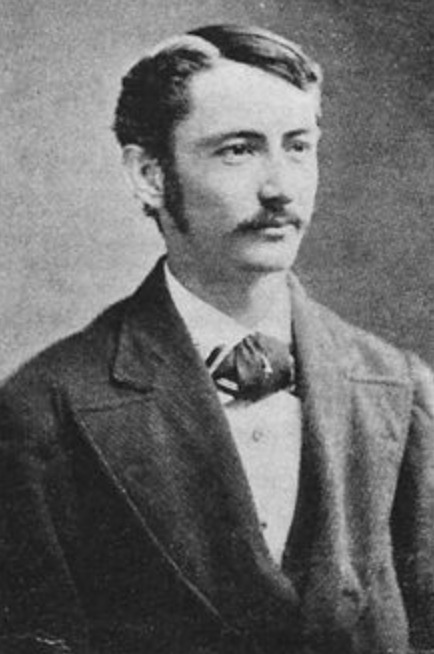
Candy Cummings
Cummings may have been a star pitcher in the National Association and briefly at the beginning of the National League, but he’s in the Hall of Fame for solely for inventing the curveball.
After fooling around with clamshells as a teenager in Massachusetts, Cummings wanted to know if he could do the same thing with a baseball. The only problem was, at the time, catchers stood 20-25 feet behind home plate. But when catcher, Nat Hicks, joined his Brooklyn team in 1867 or so, and stood directly behind the batters, Cummings could finally give the ball a spin. It completely changed how both positions were eventually played.
Now, there is some speculation that Fred Goldsmith first demonstrated the pitch in 1870 or that Cummings got the credit due to his connections with the league’s higher-ups. But Henry Chadwick, Harry Wright and Al Spalding all said Cummings was the guy. So I guess we’ll have to believe them.

Buck Ewing
I dunno. A lot of people seemed to think Ewing was the best player of the 19th Century. But if you look at fWAR from 1871-1899, he’s behind Cap Anson, Roger Connor, Dan Brouthers, Bid McPhee, Billy Hamilton, Jack Glasscock, Ed Delahanty, Harry Stovey and Jim O’Rourke. And he barely edges out King Kelly as the best 19th Century catcher. In my estimation, Ewing had four elite seasons. He was in the statistical shadow of Roger Connor on most of his own teams. And he was really only the best catcher in the league in three separate seasons. Only two players with similar career numbers are even in the Hall of Fame. JAWS ranks him as the 15th-best catcher of all time and below standards for a catcher. Then again, in 1939, he was only behind Gabby Hartnett, who was still active, and Mickey Cochrane, who had just retired in 1937. This one kinda feels like a stretch. Which only means his reputation must have been stellar and sometimes that’s all it takes.
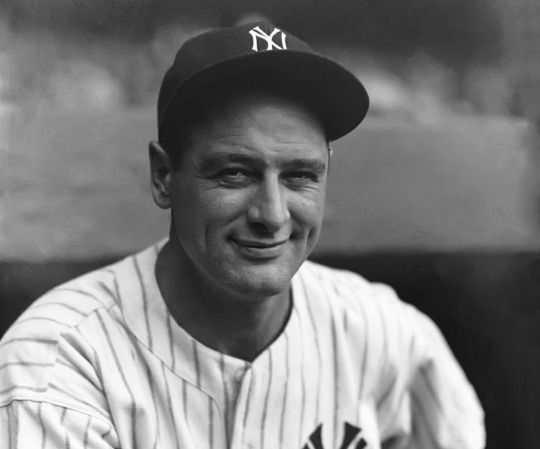
Lou Gehrig
It’s one of the greatest tragedies in sports history. As well as its greatest sendoff. July 4th, 1939 was “Lou Gehrig Appreciation Day” at Yankee Stadium, where Gehrig delivered his famous “Luckiest Man on the Face of the Earth” speech and was the first man to have his number retired by any team. He’d played in 2,130 consecutive games and been an internal part in six World Series championships. And though he played in the shadow of Babe Ruth, Gehrig could have been called the best player in baseball any time during a span of 1934-1937 and he’s still the greatest first baseman of all time.
The Iron Horse was almost 14 pounds at birth. He hit a ball out of Wrigley Field as a 17-year-old high schooler. He won a Triple Crown in 1934 and was awarded the American League MVP in 1927 and 1936. He batted behind Ruth, which meant opposing pitchers couldn’t just walk the Bambino without dire consequences. Gehrig was the first player to hit four home runs in a game and he almost hit five, but was robbed at the fence by Al Simmons of the Athletics. Hell, he even made Wally Pipp famous. Gehrig took pitches to the head and to the face and stayed in games for 14 straight seasons until ALS got the better of him. The day he sat out a lineup in Detroit, and opposing Tigers fans gave him a standing ovation out of respect.
I have Gehrig as an elite, top 5 player in the league every year from 1926-1937. And I would have given him the A.L. MVP in 1934, 1936 and 1937. That actual ‘27 MVP is pretty funny, by the way. Gehrig was unanimously elected to the Hall of Fame while he was still alive. And then shortly after his death, his story became a Hollywood classic starring Gary Cooper. Gehrig’s speech at Yankee Stadium (as well as the two-minute standing ovation that followed) may be an all-time iconic moment in all of sports, but I’ll let his manager, Joe McCarthy (who was fighting through tears) sum it up better than anyone else could.
"Lou, what else can I say except that it was a sad day in the life of everybody who knew you when you came into my hotel room that day in Detroit and told me you were quitting as a ballplayer because you felt yourself a hindrance to the team. My God, man, you were never that.” Fuckin’ A.

Willie Keeler
“Hit ‘em where they ain’t” indeed. Standing at 5′4″ and weighing 140 lbs, “Wee Willie” probably had more of a mythical status than an actual statistical resume to warrant his election this early on. But he played on the legendary Baltimore Orioles teams of the 1890′s with Dan Brouthers, Hughie Jennings, Joe Kelley, John McGraw and Wilbert Robinson, where he was probably the third-best player after Jennings and Kelley.
While in Baltimore, he perfected the “Baltimore Chop” where he would smack down at the ball and bounce it in the air high enough to reach first base before it could be fielded. He also mastered the bunt - enough that they had to make a rule change to stop him from bunting foul with two strikes. From 1896-1897, he had a 45-game hitting streak that has only been matched since by Joe DiMaggio and Pete Rose. And he had 8 seasons in a row with 200 hits (only matched by Ichiro), retiring just short of 3000 and placing himself third on the all-time list at the time of his retirement.
I would say Keeler had five elite seasons. He won two batting titles. And I would have given him the MVP in 1897. The only issue is that he was rarely the best player on his own team. Or the best right fielder in baseball. Over his own career, he was probably the 10th-best player and second-best to Elmer Flick in right. And JAWS ranks him as the 26th-best right fielder of all-time, below Hall of Fame standards. Still, his records and his sayings endured. It is a Hall of Fame after all.
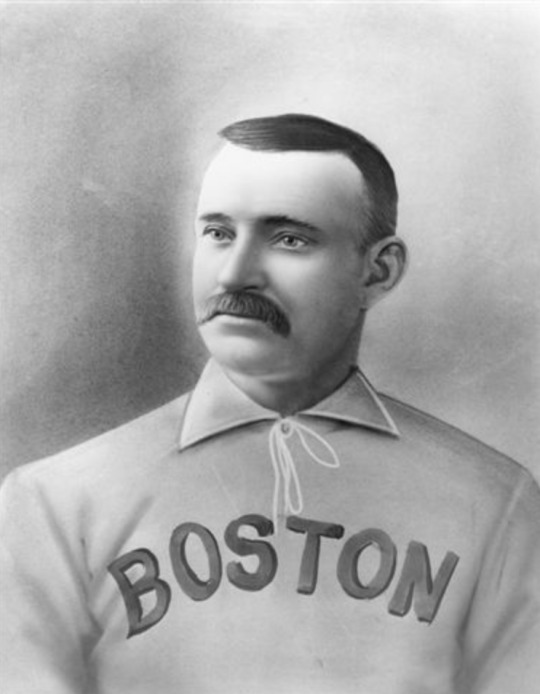
Charles Radbourn
The deal was simple for the 1884 Providence Grays: win the pennant or the team would be disbanded. And then Charlie Sweeney, or one-half or their entire Provedence pitching staff, stormed off in a drunken rage leaving only Radbourn to lead the team the rest of the way. That year, “Old Hoss” won 59 games with a 1.38 ERA and 441 strikeouts. They say his arm got so sore that he couldn’t even raise his arm to comb his hear. But it was good enough for the Triple Crown and yeah, the pennant.
That’s a pretty fucking epic performance. And Radbourn’s Cooperstown plaque says he was the greatest of all the 19th Century pitchers. But the thing is, he wasn’t. Cy Young was better, even if you cut Young’s stats off at 1899. Kid Nichols was better. So were John Clarkson and Tim Keefe. And you could make arguments for Jim McCormick, Pud Galvin and Bobby Mathews. But hey, Radbourn only pitched 11 seasons and still managed 309 wins and is ranked 20th on JAWS for starting pitchers. I would have given him the Cy Young in 1882 and ‘84. And the charley horse might be named after him, so there’s that too.
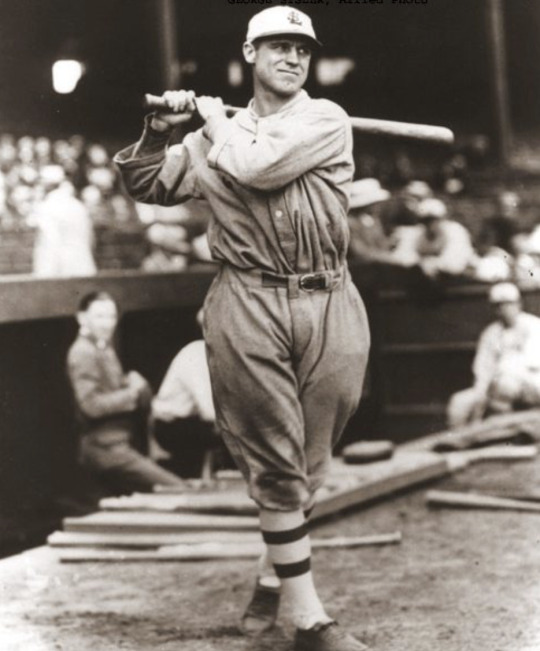
George Sisler
Oh, what might have been. Between 1917-1922, Sisler was the best player on the St. Louis Browns, the best first baseman in baseball and probably the third-best player, overall after Rogers Hornsby and Babe Ruth. He won his first batting title (.407) in 1920, collecting 257 hits. Which was a record that stood until Ichiro Suzuki broke it in 2004. And in 1922, he won the American League MVP while hitting .429.
Then he got sinusitis. It was so bad that it gave him double vision, forced him to miss the entire 1923 season and he was never quite the same after. I mean, he still routinely hit .300 and led the league in stolen bases in 1927, but he was no longer elite like he had been. It’s been speculated he could have reached 4000 career hits and done everything else in between. But in reality, he’s the 20th-best first baseman of all time.
After his playing career, he worked as a scout for Branch Rickey. And his work helped bring Jackie Robinson to the Brooklyn Dodgers. Granted, Rickey told Sisler he was scouting for an all-black team. But that’s neither here nor there. It happened and so did Sisler’s pre-sinisitus career and that’s what we’ll choose to remember.

Al Spalding
Spalding may be in the Hall as an Exec/Pioneer, but he was also the best pitcher in baseball from 1871-1875 for the Boston Red Stockings. In his brief career, he was 252-65 for an insane .795 winning percentage. And JAWS still considers him the 34th-best pitcher of all time.
In 1875, William Hulbert, the owner of the Chicago White Stockings, lured Spalding (who in turn lured Cap Anson as well as Red Stockings teammates, Deacon White, Ross Barnes and Cal McVey) to Chicago for the 1876 season. And then Spalding and Hulbert secretly created their own league and got everyone to go along with it. From there, Spalding became president and part owner of the team. And the National League started with one of the biggest jack moves in history.
I know the National Association (1871-1875) gets overlooked by Major League Baseball. But the very best pitcher in baseball took the four of the top 10 position players (including the equivalence of the previous five MVP awards in Barnes and McVey), yanked them out of a league, inserted them into a new one and called it a new league. He literally took his ball and went home.
Spalding also started a trend when he began wearing a glove in 1877. He started a sporting goods company with his brother that is still in business today. As in, it’s the Spalding company you’ve heard of. And Spalding also wrote the first set of rules for the league. One of those ever-so-convenient rules is that they conveniently had to use his Spalding baseballs. Smart. He and Cap Anson also created Spring Training in 1886. And in 1889, he took a group of players (including Anson and John Ward) on a world tour. Presumable so Anson could refuse to play against people of color from all sorts of other places.
After one of Henry Chadwick’s article came out crediting the British games of cricket and rounders as baseball’s origins, Spalding called for a commission to discover baseball’s true American origins. And that’s where they came up with the Abner Doubleday/Cooperstown bullshit. But hey, all of the men listed on this page were there in Cooperstown because of that lie. On the 100 year anniversary of a thing that didn’t happen. But the National League, the AG Spalding company, the Chicago White Stockings, spring training and baseball gloves still stand. And so does Cooperstown. I’d say the man had staying power.
Snubs:
Of the 10 men selected, 7 were players. Collins, Gehrig and Anson were perfect choices. But they should have rounded it out with Roger Connor, George Davis, Kid Nichols and Dan Brouthers. Rogers Hornsby, Jimmie Foxx, Lefty Grove and Mel Ott were not yet eligible.
0 notes
Text
1938

Grover Cleveland Alexander
In 1918, Alexander (who came to be known as “Old Pete”) was shipped off to France for World War I, where he was exposed to mustard gas, as well as an explosion that caused hearing loss, shell shock and triggered epileptic seizures when he returned home. For a man who already had problems with alcohol, the experience only exacerbated the problem. If the Great War, or at least Alexander’s involvement in it, hadn’t happened, Old Pete might have gone down as the greatest pitcher of all time.
In 1915, 1916 and 1917, Alexander won a pitcher’s Triple Crown as the star pitcher for the Phillies. And he’d win two more ERA titles (1919 and 1920 with the Cubs) and another Triple Crown (1920), but his seizures often looked like drunkenness (and yeah, a lot of times he was wasted), so the Cubs shipped him off to St. Louis in 1926 so manager, Joe McCarthy, didn’t have to deal with him anymore. It would set up one of the most epic tales of drunken heroics in sports history.
The Cardinals and Yankees faced off in the ‘26 World Series and Alexander got the win in Games 2 and 6. This was a year before Murdere’s Row, mind you. Apparently, Alexander wanted to celebrate after that Game 6 victory, so he got hammered somewhere in New York that night, not expecting to pitch in the final game of the series. But the next day, when Jesse Haines loaded the bases, up 3-2, in the 7th, Rogers Hornsby called for Alexander out of the bullpen. And Old Pete was still either hammered or feeling like dog shit from his night out on the town.
The hungover-as-fuck Alexander somehow struck out Tony Lazzeri to end the inning and preserve the 1-run lead for the Cardinals. Alexander then got a 1-2-3 inning in the 8th and then retired the first two batters of the inning in the 9th with the same score. Alexander then walked Babe Ruth with two outs. And with Bob Meusel up to bat, Ruth took off for second base and was thrown out at second by Bob O’Farrell. TO END THE WORLD SERIES. It was Alexander’s only ring in his 20-year career.
Alexander retired with 373 wins (tied for 3rd all-time with Christy Mathewson). He has 5-one-hitters and 90 shutouts (2nd all-time). I would have given him the National League Cy Young in 1915, 1916, 1917, 1919 and 1920 (five times). And I could have easily given it to him in 1914. I have him finishing in the top 5 (including 1914) 6 different times. JAWS ranks him as the #5 pitcher of all time. And he was played by Ronald Reagan in a movie. At this point in in baseball history, half of the pitchers in Cooperstown were exposed to nerve gas in World War I.
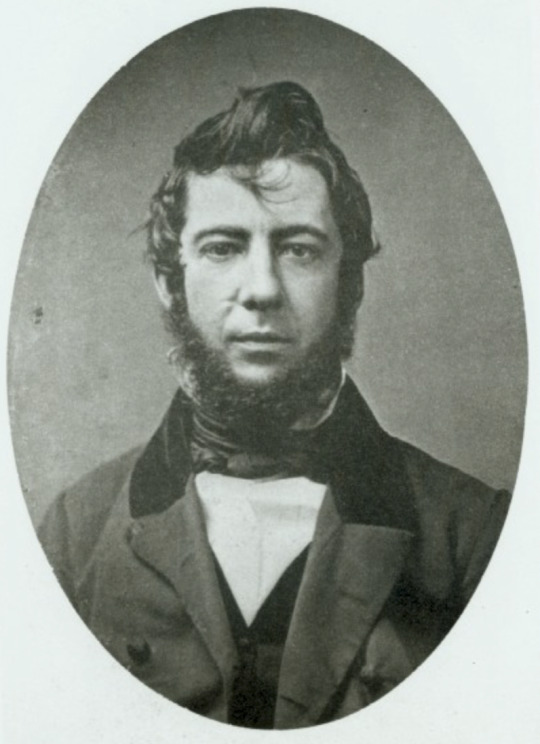
Alexander Cartwright
Hilariously, not one word of his Cooperstown plaque is actually true. But after the Mills Commission botched the whole Abner Doubleday thing, there was pressure to give credit to a single individual for inventing the game of baseball and Cartwright seemed like a good enough choice. He’d been a founding member of the New York Knickerbocker Base Ball Club in the 1840′s and he helped develop the Knickerbocker Rules. It’s just that in 1837, William R. Wheaton had already drawn up rules for the Gotham Base Ball Club. And everything just kinda developed over time. In 1857, Doc Adams drew up the “Laws of Base Ball” document for the New York-area clubs, which included 9-inning games, 90-feet bases and 9 players to a side. But by that time, Cartwright had already gone west in the gold rush of 1849 and then settled in Hawaii. Which sounds like a decent consolation.
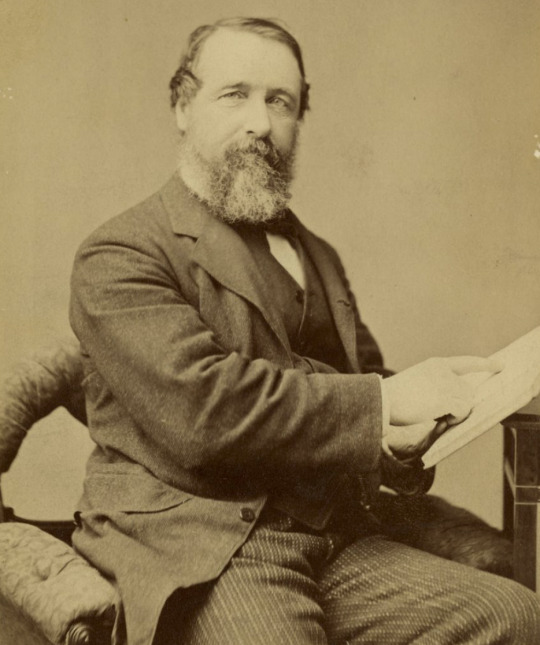
Henry Chadwick
They called the English-born Chadwick the Father of Baseball, for popularizing the game in its early days. He was a sportswriter, a statistician and a historian. And his innovations to the game include the box score (developed from cricket), the batting average, the ERA, and the usage of the K’s to denote strikeouts. Those stats aren’t perfect. But it was a good start. And one of the best things ever done, anywhere at anytime.
Should Have Gotten In: If you’re just choosing one player for 1938, and Rogers Hornsby is ineligible, I’m still saying Eddie Collins.
0 notes
Text
1937
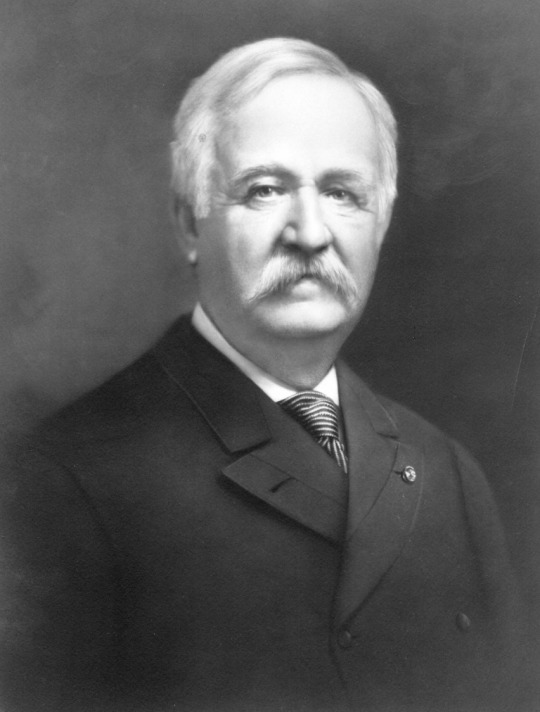
Morgan Bulkeley
Bulkeley was one of the founders as well as the first president of the National League. For one year, in 1876, anyway. And he was also part of the commission that falsely declared Abner Doubleday to be the inventor of baseball. Bulkeley was also the mayor of Hartford, the governor of Connecticut and a U.S. Senator. Before all that, he owned the Hartford Dark Blues of the old National Association (and briefly of the National League). which featured Candy Cummings (the dubious inventor of the curveball), Tom Barlow (the pioneer of the bunt) as well as Tommy Bond (who should probably be in the Hall). And he really wanted you to know that he was related to the JP Morgan family. Okay. Super. I’m sure tons of tourists take their photo with this plaque when they visit the hallowed halls of Cooperstown.

Ban Johnson
Johnson was the founder and president of the American League. In a time when the National League was seen as a rowdy, drunken shitshow, Johnson wanted to create a cleaner version so it wouldn’t scare women and children have to death with how vulgar it all was. Men. The league would also support its umpires and pay higher wages to its players, which lured away top talent from the N.L starting in 1901. Dude was basically Vince McMahon eighty years prior.
Everything was going great for Johnson until the Black Sox scandal of 1919, when Kenesaw Mountain Landis was put in charge of Major League Baseball and ruled with an iron fist. The two men did not get along and everything came to a head after Johnson criticized Landis for how he handled the Ty Cobb/Tris Speaker gambling affair after 1926. Johnson was forced to resign. And Landis continued on as authoritarian commissioner until his death in 1944.

Nap Lajoie
Not that many people have the distinction of having a Major League team named after them. But from 1903-1914, the Cleveland franchise was known as the Naps, after their player-manager second baseman. It would have helped if they’d gone by his last name, so we knew how to pronounce it (Lodge-Way). But then, of course, Lajoie left for Philadelphia, the 1914 Miracle Braves happened and then Cleveland decided to go with a less inclusive-sounding name and logo. But that’s a whole nother story.
Lajoie came up with Ed Delahanty’s Philadelphia Phillies before being lured away to the higher salaries of the American League in 1901. He promptly became the league’s first superstar, batting .426 in the league’s inaugural year on his way to a Triple Crown. Considering Lajoie hit .345 over five seasons with the Phillies, I’m not too sure about the level of competition in the Junior Circuit at the time. But I’ll let that slide for now.
Lajoie was the best first baseman in baseball in 1897. And the best second baseman in 1900-1901, 1903-1904 and 1906-1908, before taking a back seat to Eddie Collins. Some of those gaps are due to bizarre injuries, like the time he busted his hand fighting teammate, Elmer Flick, while they traveled separately from the team to avoid arrest in Pennsylvania. Or when he got blood poisoning in 1905 from being spiked and then having the dye from his socks enter into his bloodstream. He also had a 1904 suspension for spitting tobacco juice in an umpire’s eye. And in 1907, George Stovall broke a chair over his head in a hotel lobby. Lajoie’s response to the press was, “George didn’t mean anything by it.” And my response is, holy shit.
Being player-manager probably also negatively affected Lajoie’s play. He still managed (no pun intended) 3,243 career hits (the 3rd man in the 3000 hit club after Cap Anson and Wagner), a career .338 batting average, as well as five batting titles. And over his own career (1896-196), he was the best second baseman in baseball and the second-highest overall in fWAR after Honus Wagner. I would have given him the A.L. MVP in 1901, 1903 and 1904. And I would have given him top 10 finishes in 9 other seasons.
Lajoie is probably still most famous for that infamous Chalmers Race with Ty Cobb in 1910. And it’s still somehow a thing that people can’t seem to agree on (Lajoie totally fucking won). But Lajoie would retire second in all-time career hits. He was the third-greatest deadball era player after Wagner and Cobb. And the third greatest second baseman of all-time after Rogers Hornsby and Eddie Collins. Maybe Cleveland should think about going back to calling themselves the Naps. Just a thought.
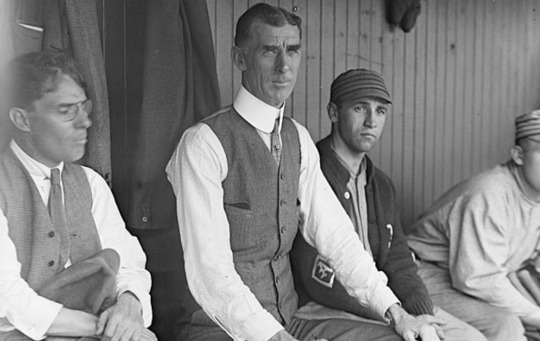
Connie Mack
Cornelius McGillicuddy began his career in baseball as a very mediocre catcher, who was known for his dirty tricks behind home plate. As one of the first catchers to play directly behind said plate and not at the backstop, he used his vantage point to fake foul tips (all caught foul tips were outs until 1891... because of dirty tricks by Mack), play mind games with batters and just generally interfere with batters’ swings. He was a real cocksucker back there.
Mack also served as player-manager of the Pittsburgh Pirates from 1894-1896. But when the new American League opened in 1901, he came on board as manager and co-owner of the Philadelphia Athletics. And it’s a post he didn’t relinquish for the next 50 years. 5-0. Not a typo. He’s the longest-serving manager in Major League history. The owner of almost every single record in managerial history. And it’s a longevity record for all of professional North American sports. No big deal, Connie. Those A’s won 9 pennants between 1902 and 1931 as well as 5 World Series titles.
Those A’s pennant teams included Hall of Famers, Eddie Plank and Eddie Collins (6 times), Chief Bender (5 times), Frank Baker (4 times), Mickey Cochrane, Jimmie Foxx, Lefty Grove and Al Simmons (3 times), Rube Waddell and Herb Pennock (twice), as well as Waite Hoyt, Elmer Flick and Nap Lajoie (one time). Mack also managed Ty Cobb, Jimmy Collins, Stan Coveleski, Nellie Fox, George Kell, Tris Speaker and Zack Wheat on the A’s. And he managed Jake Beckley in Pittsburgh.
There were also the down years following the 1931 pennant. The A’s didn’t field a winning team between 1933 and 1947. And they were often really bad. Mack was in his 80′s and known to slip mentally, mistakenly calling for players from decades earlier to pinch-hit. Or he would just sleep in the dugout during games while his coaches ran the show. Attendance got to be so bad in Philadelphia that the other American League owners (mainly the Yankees) forced Mack to sell the team and move the franchise to Kansas City because they lost money coming to town.
Managing the team you own is kind of a major conflict. And unlike most other owners, Mack had no income outside of baseball. While he was elected to the Hall of Fame in 1937, he’d yet to tarnish his legacy. But he would eventually overstay his welcome.
On the bright side, if you stick around the game of baseball until you're in your late eighties, you probably get to see a lot of history. Mack was on the receiving end of Christy Mathewson’s masterful performance in the 1905 World Series. He saw Frank Baker earn his “Home Run” nickname against Rube Marquard and Mathewson in consecutive games in the 1911 Series. He watched the 1914 Braves finalize their Miracle season. And within two years, he fielded one of the most legendarily awful teams in baseball history.
But Mack rebuilt the team and came back in epic fashion, much like the “Mack Attack” 1929 A’s, who humiliated the Cubs for another championship. Sleeping or not, Mack was a living legend in that A’s dugout. And hey, maybe he should have called on players from decades past. Because those later years fucking suuuuucked.

John McGraw
McGraw began his baseball career as a mouthy and quick-tempered infielder for the infamous Baltimore Orioles teams of the 1890’s that won pennants in 1894, ’95 and ’96 with Dan Brouthers, “Ee-Yah” Hughie Jennings, “Wee” Willie Keeler, Joe Kelley and Wilbert Robinson. There’s some debate as to just how dirty and villainous those teams were. But apparently McGraw liked to intimidate umpires and stand in the way of runners while they were in the base paths. Listed at 5’7” and 155 pounds, I don’t know how that could be possible. But for a brief window at the end of the 1890’s, McGraw might have also been the best player in the world.
I would have given McGraw the National League MVP honors in 1898 and 1899. And I would have given him 3rd in 1900. He had a .547 on-base percentage in 1899, which is 4th all-time for a single season after Barry Bonds in 2004 and 2002 and Ted Williams in 1941. His career OBP (.466) is third all-time after Williams and Babe Ruth. For real. McGraw led the league in WAR in 1899, he’s 10th in WAR for the 1890’s and over his own career (1891-1907) he’s 15th. He was pretty good. But John McGraw is not in the Hall of Fame as a player. He’s in as a manager.
Beginning in Baltimore, managing Jennings, Robinson and Kelley, as well as Joe McGinnity and Roger Bresnahan, McGraw eventually made his way to the New York Giants, which he managed from 1902-1932. His New York squads won 10 pennants and three World Series championships during his era. He managed an absurd amount of Hall of Famers, but that was also greatly exacerbated by Frankie Frisch and Bill Terry while they were on the Veterans Committee. That list includes High Pockets Kelly and Ross Youngs and Freddie Lindstrom, who probably don’t deserve to be in there. But hey, they were part of four consecutive pennants with Frisch and Terry between 1921 and 1924. The list of deserving Hall inductees also includes Bresnahan, Christy Mathewson, McGinnity, George Davis, Brouthers, Jim O’Rourke, Keeler, Edd Roush, Bill McKechnie, Waite Hoyt, Dave Bancroft, Casey Stengel, Travis Jackson, Hack Wilson, Billy Southworth, Mel Ott, Burleigh Grimes, Carl Hubbell and Ray Schalk. And Rube Marquard as another dubious selection.
McGraw has the second-most managerial wins of all-time, after Mack. And he was ejected 131 times in his career, which was a record that stood until 2007, when it was broken by Bobby Cox. Much like Mack, McGraw saw a lot of history over the years. Including the history he made by refusing to play in the 1904 World Series. But there was also the Mathewson performance in 1905 against Mack’s Athletics. Losing to Mack and Home Run Baker in 1911. Losing his third consecutive World Series (also to Mack) in 1913. And losing in even more dubious fashion (to the point that it might not have been on the level) in 1917. He had better luck against Babe Ruth’s Yankees in 1921 and 1922. But he lost his final two, to Ruth in ’23 and Walter Johnson in ’24. McGraw even returned to manage the first ever All-Star Game in 1933. He got out with his legacy in tact.

Tris Speaker
I feel like the Grey Eagle is largely forgotten today, which is pretty odd considering everything he did on the diamond. Playing at the same time, in the same league and at the same position as Ty Cobb doesn’t really help his cause. Either does having some of his best seasons during the ascendency of Babe Ruth. Or maybe its the assertion, true or not, that Speaker was a member of the Klan that makes people want to forget his racist asshole face. I dunno. It’s not like that accusation did much to diminish Cobb, who was already seen as a heel during his career, as well as after.
That said, Speaker was the best player on the Red Sox (and their Million Dollar Outfield) from 1909-1915. And he won two World Series with Boston in 1912 and 1915. Then he was the best player in Cleveland from 1916-1925, including their first World Series title in 1920 (the same year as the death of his teammate, Ray Chapman). And going off fWAR, where Speaker was a better fielder than Cobb (Speaker played extremely shallow and they nicknamed him ‘where triples go to die’), he actually would have been the best center fielder in baseball in 1909, 1912, 1913, 1916, 1920, 1922 and 1923. He won the American League MVP in 1912. I would have given it to him in 1912, 1914, 1916, 1922 and 1925 for a total of five. Again, that’s impressive in any era, but especially when Cobb and Ruth were in the same league at the same time. I also would have given Speaker top 10 finishes (and usually top 5 finishes) in 13 other seasons. He was fucking good.
Speaker may have only been second-best at his position while he played. But he’s still the #3 center fielder of all-time on JAWS. When he retired, he was also #3 all-time in career WAR. He was the 5th man in the 3,000 hit club. His 3,514 hits still ranks 5th all time. His .345 batting average ranks 6th all time. And he still has the all-time career record for doubles. He was so good that he and Ty Cobb basically got away with fixing games in 1926. Maybe.
As a manager, Speaker introduced the platoon system into Major League Baseball. And he was a staunch supporter of Larry Doby when he broke the American League color barrier in 1947. So either Speaker chilled out about race, or the Klan shit is overblown. I hope it’s the latter. Because, second Hall of Fame class or not, Tris Speaker is criminally underrated.

George Wright
They say Wright was the best player on baseball’s first professional team, the Cincinnati Red Stockings. That Cincinnati team went undefeated in 1869, with Wright hitting .633 with 49 home runs in 57 games. Next, Wright moved on to the Boston Red Stockings, who won National Association pennants every year from 1872-1875 and were so goddamned good that it essentially caused the league to disband. Wright was the second-best position player on those Red Stockings, which made him the second-best player in the league. Wright was also the first batter in National League history. He managed the Providence Grays in 1879 and won the pennant his only year as a manager. Wright also served on the commission that falsely named Cooperstown as the birthplace of baseball. And he’d go on to design America’s first public golf course in 1890. Unless that’s made up too.

Cy Young
Yeah, you’ve heard of him. Cy Young began his career in 1890, when the pitching rules were so different from today’s game that they would anger you. He didn’t even wear a glove until his 6th season. But over his 22-year career, Cy Young became a one-man bridge from the old timey 19th Century style of base ball into the era of modern baseball. The confusion over which era Young belonged to was probably the sole reason he wasn’t in the first class of Hall of Famers in 1936. And over that 22-year career he set basically ever pitching record that would ever be broken, along with some that won’t be touched in a billion years.
Denton True Young got the name “Cy” because his fastball tore enough boards off of backstops that it looked like a cyclone had hit them. Or so the story goes. But he, Amos Rusie and Jouett Meekin get credited as the reason the pitching distance (the box, as they called it) was moved back ten feet to give hitters a fighting chance. Most star pitchers of the 50-feet days couldn’t cut it after the rule change. Cy Young could. But his catcher did have to start wearing a piece of raw steak under his glove to handle the heat.
I would have given Young his namesake award in 1892, 1893, 1895, 1896, 1899, 1901, 1903 and 1905. That’s eight times. And I would have had him in the top 5 eight other times. Young threw three no-hitters, including the first perfect game under modern rules. The third no-hitter was in his age 41 season. He won a Triple Crown in 1901. He once went 25.1 innings without giving up a hit and 45 innings without giving up a run. He threw the first pitch in a modern World Series in 1903. And his rivalry with Rube Waddell is great. But let’s be honest, Cy Young won the war. He also won 511 games. And Major League Baseball honored his legacy with the award given to the year’s best pitcher the year after his death.
Should Have Chosen:
In 1936, 5 men were voted in. They were Ty Cobb, Walter Johnson, Christy Mathewson, Babe Ruth and Honus Wagner. You could argue that Tris Speaker and Cy Young should have gone in on the first try. In every scenario (fWAR and JAWS) Ruth, Cobb, Speaker and Young are in the top 5. But all men are worthy, so it’s fairly moot.
Now, if the Veteran’s Committee had done its job and selected 5 19th Century players, they should have been Cap Anson, Roger Connor, Dan Brouthers, Tim Keefe and John Clarkson.
In 1937, three players (Lajoie, Speaker and Young) went in. Young and Speaker are certainly correct. And Rogers Hornsby had just retired, so I think it should have been Eddie Collins over Lajoie
0 notes
Text
The First Class: Babe Ruth
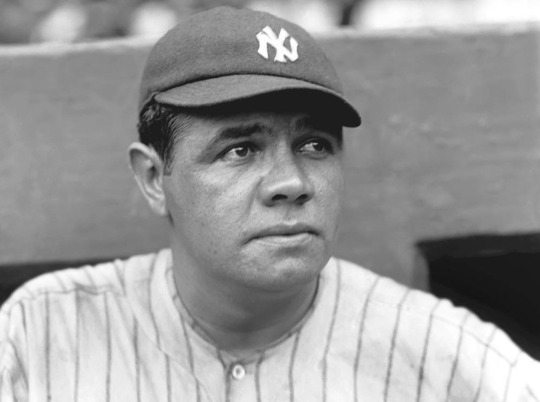
I mean, the guy was a cartoon character. I don’t know what else to say. The story of Babe Ruth is the stuff of legend in American culture, beginning with his rags-to-riches origin story in an orphanage in Baltimore. And from those humble beginnings, he’d go on to completely alter the way baseball was played and even without all the myth making, the numbers speak loudly and clearly for themselves. Babe Ruth is the greatest baseball player to ever play the game.
The storied professional career of Ruth began in Boston, where Ruth was a big left-handed pitcher who got a reputation for also hitting long home runs. I also would have told you that he was the second-best pitcher in the American League after Walter Johnson in 1916. And 6th-best in 1917. In 1916, he pitched 9 shoutouts, which was a left-handed record that wasn’t touched until Ron Guidry tied it in 1978. In Game 2 of the 1916 World Series, Ruth pitched a 14-inning complete game (97 GameScore), where the only run he allowed was in the first inning. It’s the longest complete game in World Series history. And his 29.2 scoreless innings in the postseason (1916-1918) was a record that lasted until Whitey Ford broke it in 1961, which turns out to be a good year for breaking Ruth’s records. Oh, and he also pitched that 1918 World Series with an injured hand from a bar fight or something. So there’s that too.
My favorite Ruth pitching story comes from 1917, where Ruth opened a game with a 4-pitch walk to Ray Morgan of the Senators. And Ruth got so mad at the umpire’s strike zone that he threw a fucking punch at him and was ejected from the game. Ruth was relieved by Ernie Shore. And after Morgan was caught stealing second, Shore proceeded to retire the next 26 Washington batters in a row. For decades Shore’s performance was listed as a perfect game, but in reality, it’s probably just the weirdest combined no-hitter in history.
Due to American’s entry into World War I, some new openings in the lineup and everyone starting to notice that more fans showed up on days when Ruth played, he got some opportunities to do more than just pitch. In 1918, he managed to tie for the lead in A.L. home runs with 11. And that home run title was something Ruth would accomplish 11 more times, except with exponentially higher totals.
In the war-shortened 1919 season, Ruth hit 29 home runs, breaking the single-season record. The previous record holder was Ned Williamson of the 1884 Chicago White Stockings, whose right field fence that season was 215 feet away and for one season only, balls hit over that fence were not considered ground rule doubles. Ruth should have won his first A.L. MVP that year. Instead, Red Sox owner, Harry Frazee, made his infamous deal with the Yankees, shipping off Ruth to finance his Broadway production of No, No, Nannette and causing the Curse of the Bambino, which led to no Sox pennants until 1946, no World Series titles until 2004 and every painful Bucky Dent/Billy Buckner memory in between. Or so the legend goes.
Babe Ruth headed to New York City in 1920, just in time for improvements in the manufacturing of baseballs, the death of Ray Chapman via beaning and the abolition of the spitball. Baseballs were whiter and tighter and Ruth had a short porch in right field at the Polo Grounds. That year he hit 54 home runs, shattering his own record. Only two teams - like, entire teams - hit as many that year. But Ruth should have won his second A.L. MVP and the live-ball era had begun. It was also just in time for everyone to forget about the 1919 Black Sox Scandal. How convenient.
Ruth would break his own mark with 59 home runs in 1921, also surpassing Roger Connor for the all-time record. It’s a record that he would break continuously almost 600 times the rest of his storied career. This was also the Roaring Twenties and Ruth epitomized the debaucherous aspects of the decade. He was larger than life. He drank heavily. He womanized. In 1922, he threw dirt in an umpire’s face and then climbed into the stands to confront a heckling fan. In the ‘22 World Series, John McGraw had his pitchers throw Ruth nothing but curveballs, making him look mortal for the first time.
When the Yankees’ lease at the Polo Grounds was not renewed after the ‘22 season, they built Yankee Stadium in the Bronx and it was coined, the House that Ruth Built. And it was designed especially with him in mind. Ruth’s dominance continued until 1925, where his fast living and horrible diet ballooned his weight to 260 and sidelined him with a mysterious ailment in what would become known as the bellyache heard ‘round the world. Once he recovered, it was off to the goddamn races.
The 1927 Yankees became the standard bearer for the greatest team of all time. They were Murderer’s Row. Babe Ruth. Lou Gehrig. Tony Lazzeri. Earle Combs. Plus pitchers Herb Pennock and Waite Hoyt. Ruth and Gehrig both chased after the home run record that summer and Ruth ended up with 60, which became one of the most famous records in all of sports.
Yeah, a lot of the Babe Ruth story is colored by myth and legend. I don't necessarily care if he didn’t call his own shot in the 1932 World Series. Or if the pinstripes pre-date Ruth’s arrival and/or need to look thin. Or if he didn’t save a boy’s life by promising to hit him a home run. The actual facts are good enough for me.
While Ruth played, he set the all-time marks for home runs, RBI, walks, slugging percentage and an OPS record that still stands. He was the best player on the Yankees from 1920-1924 and again from 1926-1932. He was essentially the best outfielder in baseball over that same period. Which makes sense, since he’s the greatest right fielder of all time. If I were a voter with advanced metrics, I would have given him the A.L. MVP in 1919, 1920, 1921, 1923, 1924, 1926, 1927, 1928, 1929, 1930 and 1931. That’s 11 times. And I would have given him top 3 finishes in 1922, 1932 and 1933. Baseball Reference Hall of Fame Standards ranks Ruth as the greatest position player of all time. So does JAWS. He won three World Series titles in Boston and four more in New York. It’s bananas.
Ruth played until booze had broken his body down. And his bad reputation black balled him from managing in the big leagues after his retirement. His swan song came at Babe Ruth Day at Yankee Stadium in 1947. And the photo of a frail Ruth using a bat as a cane as he faces that short porch in right field won the Pulitzer. Before Michael Jordan, before Muhammad Ali, there was Babe Ruth - the Bambino, the Sultan of Swat. His legacy endured throughout the 20th Century and will probably continue to do so throughout the 21st as a symbol of excellence in American sports. To be the best at something is to be the ‘Babe Ruth’ of whatever that is. And he’ll also endure as a symbol of American possibility. The kid from the orphanage who went on to conquer the world. And he also came to be the symbol of America, itself. Baseball is one of America’s greatest inventions. And it was reinvented by Ruth. He is the GOAT.
0 notes
Text
The First Class: Walter Johnson

Walter Johnson must have been horrifying. Throwing sidearm at 99 mph, in ballparks with no lights and with balls caked in mud and French dipped in spittoon au jus. Batters had to head to the plate with no helmet and pray to their god that the Big Train had his command that day. Their god was merciful. Johnson never killed anyone. But he did strike a lot of their asses out.
From 21 seasons, Johnson pitched for the Washington Senators and was their ace from 1908-1919 and then from 1921-1926. He won 417 games in his career (2nd all-time) and lost 279. In 65 of those losses, his team didn’t score. And in 26, his team lost 1-0. Johnson still holds the all-time record with 110 shutouts. And he held the all-time strikeout record until 1983.
Although Johnson did play for losing teams most of his career (13 seasons below .500, including five 7th place finishes and two in last place), his Senators did win back-to-back pennants in 1924 and 1925, Johnnson’s age 36 and 37 seasons. He had two losses in the ‘24 Series before pitching four innings of relief in the 12-inning Game 7 against the Giants to get the win. And he had two wins before giving up 9 runs (5 earned) in a Game 7 loss to the Pirates the following year.
There was no Cy Young Award while Johnson played. He did win the A.L. MVP in 1913 and 1924. But I would have given him the A.L. Cy in 1910, 1912, 1913, 1915, 1916, 1918, 1919 and 1924. That’s 8 total. I also would have put him in the top 5 in 1908, 1911, 1914, 1921 and 1925, for a total of 13 elite seasons. He also led the league in WAR in 1917, but finished 12th in ERA. He led the league in strikeouts 12 times. He won the pitchers Triple Crown in 1913, 1918 and 1924. Over the course of his own career (1907-1927), Johnson has the highest fWAR of any Major League pitcher. Baseball Reference Standards ranks him as the #2 pitcher of all time. JAWS ranks him as the greatest of all time. He must have been fucking horrifying.
0 notes
Text
The First Class: Honus Wagner
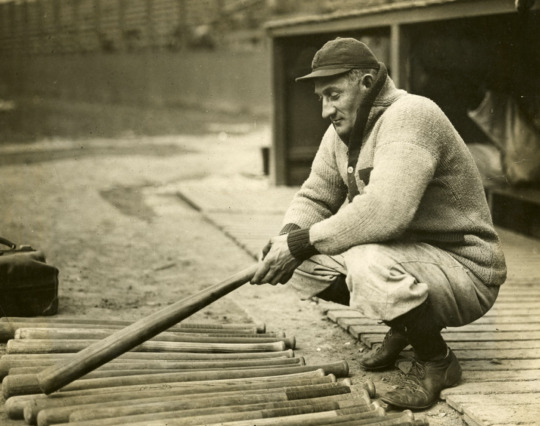
When you look at the career of the Flying Dutchman, it’s almost shocking that the thing he’s most recognized for today is halting production of his American Tobacco Company T206 baseball card and how now that shit is worth millions of dollars. Especially if it was once owned by Wayne Gretzky. But Wagner was a lot more than that. A LOT more. Barrel chested and bow legged with long arms and huge hands, he also happens to be the greatest player of the deadball era and the greatest shortstop of all time.
Wagner came up with Fred Clarke’s Louisville Colonels in 1897, where he became the best player on the team in 1899. A few years later, when Louisville Slugger put Wagner’s name on their bats, he became the first athlete to ever endorse a product. And when the National League condensed from 12 teams to 8 in 1900, Wagner headed off to Pittsburgh, where he won the first of his 8 N.L. batting titles. He would also lead the National League in WAR every year from 1900-1909 and again in 1911 and 1912. And by 1908 he was the all-time leader in career WAR. That lasted until Ty Cobb surpassed him in 1925, seven years into the live ball era.
Wagner did win an N.L. MVP award, not that it was really a thing back then. But I would have given him the award in 1900, 1902, 1904, 1906, 1907, 1908, 1909 and 1911, for a total of 8. And I would have given him top 5 finishes in five other seasons. His Pirates won pennants in 1901, 1902, 1903 and 1909. Which means Wagner played in the first modern World Series against Cy Young’s Boston Americans, which the Pirates lost 5-games-to-3. Taunted relentlessly by Boston’s Royal Rooters, Wagner only hit .222 in the Series, which bothered him the rest of his career. He did make up for it, hitting .333 and winning the World Series against Ty Cobb’s Tigers in 1909.
Wagner was also the second person to reach 3,000 career hits. JAWS ranks him as the 8th-best position player of all-time. Baseball Reference Standards has him 9th. And he even managed an inside the park home run in his age-42 season. Remember that Simpsons episode when Mr. Burns tries to name Wagner as his starting shortstop? Yeah, Mr. Burns wasn’t wrong.
0 notes
Text
The First Class: Ty Cobb

I’m sure you’ve already heard a lot of the infamous stories. Ty Cobb attacked a handicapped heckler in the crowd for calling his mother the n-word. Then when he was told the man didn’t have any hands, he yelled, “I don’t care if he got no feet!” He also attacked a black groundskeeper and then choked the man’s wife when she tried to save him. He fought umpires under the stands after games. He fought hotel elevator operators. He sharpened his cleats to spike opposing players. He once traveled to Princeton just to whip his own son (like, with an actual whip) for flunking out of school.
If you believe everything you read about the Georgia Peach, it’s like we believe an actual man existed - and lived into the 1960′s - who was a walking, talking, murderous, racist psychopath fueled by tobacco juice and Confederate rage. If Tyrus Raymond Cobb was in your city, a race riot or a hate crime could (and probably would) happen at any second. He was Jack the Ripper times Thaddeus Stevens.
I just don’t know how much of that shit is true.
A lot of the information on Cobb’s misbehavior comes from a widely discredited biography by Al Stump, written 30 years after Cobb’s death. And those sensationalized stories sold books and then movie tickets. It also didn’t hurt that almost everyone, his teammates definitely included, seemed to have hated Cobb’s guts. It’s likely that catcher, Boss Schmidt, made up the story about the groundskeeper to cover for one of the times he got caught attacking Cobb. And the heckler attack seems inexcusable through a 21st Century lens, but apparently Cobb’s teammates (who I’ll remind you, despised him) actually thought he was in the right - enough to boycott games when Cobb was suspended.
The ensuing Tigers game with sandlot scrubs and replacement players has the notable distinction of the Tigers one-time-only pitcher, Allan Travers, going 9-complete-innings and giving up 24 runs on 26 hits, for a -24 GameScore against the Philadelphia Athletics. But hey, those garbage Tigers also committed 7 errors in the game, so Travers’ career ERA is ‘only’ 15.75. But back to the handless heckler beating...
Besides Cobb’s teammates having his back, I guess it also wasn’t all that rare for players to attack hecklers back in the day. Babe Ruth did it. Cy Young did it. And, I dunno, maybe you shouldn’t be yelling the n-word in public at known/rumored rage-monsters. Especially if you have no goddamn hands.
I could also mention that Cobb debuted in the big leagues three weeks after his mother accidentally murdered Cobb’s father as he was trying to catch her in the act of infidelity. I also don’t want to make excuses for the guy if these stories are true. But later in life, Cobb seemed to have nothing but praise for black players like Jackie Robinson, Roy Campanella and Willie Mays. He also successfully lobbied for several of his Tigers teammates to join him in the Hall of Fame, including his former mentor, Sam Crawford. Even though Crawford greatly resented Cobb for surpassing him in stardom.
As a player, Cobb was a goddamned beast. He had at least a .300 batting average for 23 seasons in a row. I mean, holy fuck. He won 12 batting titles. He won the Triple Crown in 1909 without ever hitting a home run over the fence. He has the highest career batting average (.366) of all time. He set 90 different MLB records during his career. I guess you could say he wasn’t there to make friends.
Cobb won the A.L. MVP in 1911 before it was really a thing. I would have given it to him in 1907, 1908, 1909, 1910, 1911, 1915, 1917 and 1918. That’s 8 MVP awards. And I would have had him finishing in the top 10 18 different times. Over his own lengthy career (1905-1928), Cobb has the highest career fWAR of all other players. While his popularity and style of play were eventually surpassed by Babe Ruth, Cobb did go 6-for-6 with 3 bombs (and hitting 5 in a period of two days) attempting to swing for the fences like the Bambino. All just to prove a point.
Coerced into an early retirement, along with Tris Speaker after the 1926 season, because they were caught fixing games, Cobb probably escaped a lifetime banishment when Dutch Leonard refused to testify against him at the hearings. Instead, Cobb returned with the Philadelphia Athletics in 1927, at age 40, had his final elite season and then retired after 1928 on his own terms. As an early investor in Coca-Cola and GM, Cobb would live out his post-retirement life as a multimillionaire.
Seemingly nobody (save for possibly “Shoeless” Joe Jackson) liked Cobb or his antics. On the final day of the 1910 season, while Cobb sat out to preserve his .383 average, the St. Louis Browns allowed Nap Lajoie to bunt his way to going 8-for-8 in a double header, just to try to fuck Cobb out of winning the batting title and the Chalmers Award. When Lajoie was deemed the winner (.384), he received multiple telegrams from Cobb’s own teammates congratulating him on beating Cobb. And yet, when voting began on the first entrants to the Hall of Fame in 1936, Cobb sat atop the list with 98.2% of the vote. Fittingly, that too was a record. Hate him all you want. But Ty Cobb was the Man.
0 notes
Text
The First Class: Christy Mathewson

At a time when most ballplayers were degenerate booze bags, trolly hobos and lowlife scum, Christy Mathewson was a clean-cut, handsome and college-educated Bible thumper, who was adored by fans and the media alike as the Christian Gentleman. He could pitch too. Just not on Sundays, because Jesus.
Mathewson, with his uncanny fastball command and fadeaway screwball, was the ace of the New York Giants every year from 1901-1913, except for an off year in 1906, when came down with diptheria. Which is about the most 1906 thing you can type. But being the ace of that staff wasn’t easy, considering it also featured Hall of Famers, Joe McGinnity and Rube Marquard. I mean, Marquard is widely considered to be the worst pitcher in Cooperstown. But still.
While the Cy Young Award did not exist while Matty played, I would have given him 12 separate top 5 finishes, and he would have taken home the award (if it were up to me) in 1903, 1904, 1905, 1908, 1909, 1910, 1911 and 1912. That’s 8 N.L. Cy Young Awards if you’re counting at home. Imagine if he hadn’t gotten diphtheria. Over his career (1900-1916), he was by far the best pitcher in baseball. Even a success against him could make your career (Frank Baker in 1911, Mordecai Brown’s 13-11-1 record head-to-head).
Over the course of his 17 years with the Giants, Mathewson’s team won the pennant five times and went to four World Series (no Series in 1904, Merkle’s Boner robbed him in 1908). Mathewson’s best was in 1905, when he pitched three complete game shutouts within a six day period (85, 86 and 81 GameScores) and the Giants defeated the Philadelphia Athletics in 5 Games. It might still be the greatest postseason performance of all time. And if it’s not, holy shit.
Mathewson still ranks in the Top 10 all-time in WAR, ERA (2.12), Wins (378) and Shutouts. He won the pitchers Triple Crown in 1905 and 1908. Baseball Reference’s Hall of Fame Standards ranks him as the #1 pitcher of all time. JAWS ranks him 6th all-time, behind contemporaries, Walter Johnson, Cy Young, Kid Nichols and Pete Alexander as well as non-contemporary, Roger Clemens. And now is a fun time to remind you that Mathewson was also an All-American drop kicker in college and also briefly played in the first NFL, back when the helmets were leather and the men who played often died on the field. But Wikipedia also mentions he was a ‘renowned champion’ checkers player too. Just in case you thought he was just okay at checkers.
Beloved by manager (and Manhattan duplex-mate) John McGraw, Mathewson was finally traded to the Reds (with Edd Roush) in 1916, where he could manage. So everything kinda came full circle for him. He also began his career in the Reds organization before being traded to New York for Amos Rusie in 1900. The managing didn’t go as well as the playing. But after the 1919 World Series, Mathewson helped expose the Black Sox Scandal. He also signed up to serve in World War I, for the chemical service (alongside Ty Cobb). But an accidental exposure to gas while in France left him with tuberculosis. He was going to become figurehead co-owner of the Boston Braves in 1923, but his illness got the better of him. Mathewson died in 1925 and during the World Series, both the Pirates and Senators wore black arm bands in his honor. He was posthumously elected to the first class of the Hall of Fame in 1936.
0 notes
Text
The Mystery of Jim McCormick: Solved
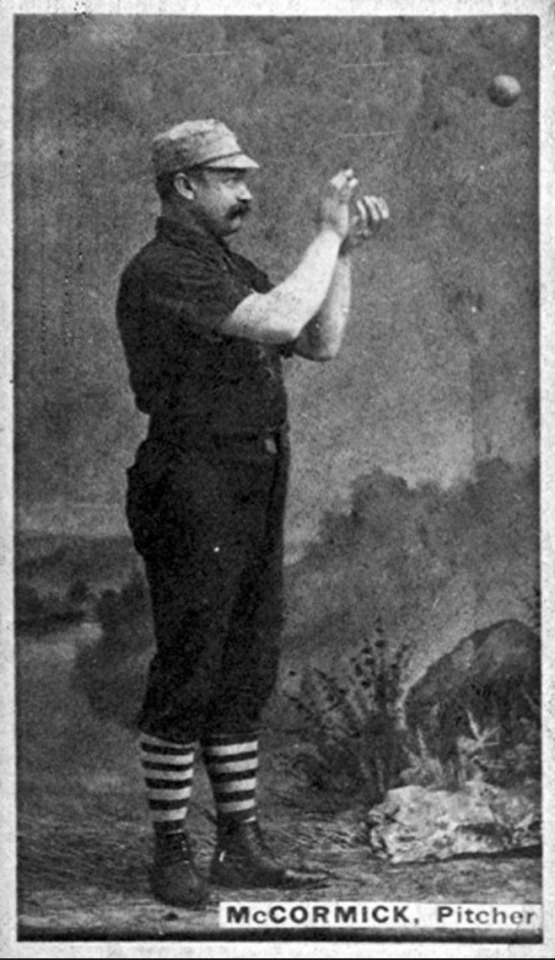

Have you ever looked at the JAWS list for pitchers? It can be an infuriatingly frustrating experience. Let’s say that you’re trying to make a case that a pitcher like Mike Mussina, Roy Halladay or Curt Schilling (I know, I know) deserve to be in the Hall of Fame. And let’s say you’re using Bill James’ tried-and-true Keltner List as a guideline. Question #10 on that list is, “Is he the best player at his position who is eligible for the Hall of Fame?” Well, if you take Roger Clemens out of the equation, the answer to that question is still always going to be no. Because the best pitcher not currently in Cooperstown (according to JAWS, anyway) is always Jim McCormick, some guy who pitched from 1878-1887. For teams like the Indianapolis and Cleveland Blues, the Cincinnati Outlaw Reds, the Providence Grays and the Pittsburgh Alleghenys. I mean, the guy played a year in the Union Association, whatever that was. He also pitched from 50 feet his whole career, underhand until 1884, with batters having the privilege of calling for a low or a high pitch. During his career, 9 balls equaled a walk. Then 8. Then 6. Then 5. He never even made it to 1893, when the distance was moved to 60-feet-6-inches. And yet there he is, like a sore thumb, #18 on JAWS.
You might want to dismiss McCormick on era alone, but two pitchers from the 1870′s and five other pre-1884 pitchers are in the Hall of Fame, officially as pitchers. Al Spalding and Candy Cummings are in as ‘pioneers’. The rest won 300 games. And if McCormick had won 300 instead of 265, we wouldn’t even be having this discussion. Plus, he ranks higher on JAWS than Pud Galvin (310 wins), Mickey Welch (307) and Old Hoss Radbourn (309). Wins have been historically overvalued. And these guys may have been throwing underhand from 50 feet, but they were still trying to deceive the batters. Candy Cummings is in the Hall as the (debatable) inventor of the curveball, for chrissakes. And some of these underhand pitchers were actually really effective at deceiving batters. There were 10 no-hitters before 1884 and two of them were by Larry Corcoran of the White Stockings. Underhand. Then he pitched another one in 1884. If you’re doing math at home, that’s three no-hitters for a guy from an era that gets dismissed as irrelevant.
It may not have looked like modern pitching. But that means it shouldn’t have looked like modern hitting either. And yet nine different pre-1884 position players are in the Hall, all while calling for high or low pitches and apparently padding their career stats. Go figure.
So if we decide that pre-1884 pitchers and pre-1893 pitchers are Hall-of-Fame-worthy, which I think we can, let’s take a look at Jim McCormick. And let’s use the aforementioned Keltner List to sort things out.
1. Was he ever regarded as the best player in baseball? Did anybody, while he was active, ever suggest that he was the best player in baseball?
I don’t think so. I never would have given him a league Cy Young Award, although he would have come close in 1880. He did put up some massive black ink in 1880 and 1882 due to sheer workload. Like, insane 19th Century oh-my-god-600-innings workloads. And he led the National League in ERA in 1883 and the UA in ERA in ‘84.
So I think one could make a decent argument for McCormick being the best pitcher in 1880. But I would say the best he could hope for was #2, which is not nothing. It’s just not a yes.
2. Was he the best player on his team?
Yes, But... These teams didn’t necessarily have a staff, per se. So from 1879-1882, McCormick was THE pitcher for the Cleveland Blues (and also player-manager in 1879-80 and ‘82). He also pitched on two-man rotations, where he was the better of the two for Cleveland in 1883 and with Cincinnati of the UA in 1884. He was the #2 guy in Indianapolis in 1878 and #2 with Cleveland in 1884 (yes, he played in two leagues that year). And then he took a backseat to John Clarkson in Chicago in 1885 and ‘86 before ending his career the #3 guy in Pittsburgh.
3. Was he the best player in baseball at his position? Was he the best player in the league at his position?
To expand upon the answer to #1, over McCormick’s own career (1878-1887), McCormick is 4th in fWAR after Pud Galvin, Tim Keefe and Jim Whitney. I think the best he can do is #2 to Pud Galvin if you go 1879-1883 or ‘84. It’s not helping that Whitney is not a Hall of Famer, is not in the Hall of Stats, has a 31 on Standards and is 52nd on JAWS. And just for fun, here are the top 10 single-season fWARs during McCormick’s career.
Toad Ramsey 10.9 1886
John Clarkson 10.9 1887 (HOF)
Toad Ramsey 10.9 1887
Tim Keefe 10.8 1883 (HOF)
Pud Galvin 10.7 1884 (HOF)
Guy Hecker 10.4 1884
John Clarkson 10.1 1885 (HOF)
Matt Kilroy 10.0 1886
Charlie Buffinton 9.9 1884
Charley Radbourn 9.5 1884 (HOF)
4. Did he have an impact on a number of pennant races?
McCormick’s teams were usually pretty bad until he went to Chicago in 1885 and 1886, where he won two pennants with the White Stockings.
5. Was he good enough that he could play regularly after passing his prime?
He only played for 10 seasons. So maybe not. But it’s not like these old time pitchers played that long. Amos Rusie also only pitched for 10 seasons. Old Hoss Radbourn pitched for 11 seasons. John Clarkson pitched for 12. Mickey Welch pitched for 13. There were major rule changes along the way. Dudes arms basically fell off from those insane workloads. So taken into the context of the times, it was a fairly long career.
6. Is he the very best baseball player in history who is not in the Hall of Fame?
No. He’s 53rd on Hall of Stats for non-Hall-of-Famers. His 51 standards is behind Roger Clemens and Mike Mussina, not to mention Barry Bonds, Manny Ramirez, Gary Sheffield, Larry Walker, Rafael Palmeiro, Pete Rose and Sammy Sosa. And he trails Clemens on JAWS for pitchers.
7. Are most players who have comparable statistics in the Hall of Fame?
Vic Willis, Old Hoss Radbourn, Red Faber and Burleigh Grimes are similar on BBR Similarity Scores. On Hall of Stats, 18 of the 20 most similar pitchers are deemed Hall-worthy.
8. Do the player’s numbers meet Hall of Fame standards?
McCormick’s Standards score is a 51, which would make him above average for a Hall of Famer. 265 wins, a 2.43 ERA, a 118 ERA+. His Hall of Stats number is 105, which would also place him in the Hall, if not towards the bottom of the list (201/226). And that’s with a - 20% adjustment for anything before 1893.
9. Is there any evidence to suggest that the player was significantly better or worse than is suggested by his statistics?
Yeah. I think a lot of his WAR is due to the amount of innings he ate up in Cleveland from 1879-1882, plus that combined NL and UA year in 1884. As Hall of Stats mentions, he’s the only pitcher with more than three seasons of 500+ innings. And he did it five times. That could be impressive or a reason to dismiss his totals (hence their 20% adjustment), depending on how you look at it. He also never had to pitch from 60′6″, which is something major to consider. His bWAR is also significantly different than his fWAR (72.2 to 40.0). BBR gives him a 7.8 WAR in 24 games in the Union Association. FanGraphs gives him a 3.7.
At the same time, McCormick was consistently in the top 10 in fWAR, FIP and ERA. He finished in the top 10 in all 3 six different times in the NL and once in the UA. And even if there weren’t very many teams and there weren’t very many pitchers to begin with, nobody else did that. Not one. From 1871-1895, Jim McCormick was the only pitcher with six elite seasons. I call that ‘the Koufax Rule’. And the only other 19th Century pitchers who meet that criteria were Cy Young (who was a freak and did it 16 times), Kid Nichols (7) and Amos Rusie. Through 2017, only 45 pitchers qualify for the Koufax Rule (which doesn’t really exist, it’s just a thing I invented) and only McCormick, Babe Adams, Tommy Bridges (7), Dutch Leonard, Curt Simmons, Roger Clemens (13), Mike Mussina (10), Kevin Brown (7) and Curt Schilling (8) have done it, are eligible for the Hall of Fame and remain outside.
10. Is he the best player at his position who is eligible for the Hall of Fame?
On Jaws? Other than Roger Clemens, yes. On Hall of Stats, 19 pitchers are ahead of him since he got adjusted 20%. And for Standards, it’s Clemens and Mussina.
11. How many MVP-type seasons did he have? Did he ever win an MVP award? If not, how many times was he close?
In 1878, Will White is my pick for Cy Young and I have McCormick 7th. It is funny to me to name any pre-1890 pitching awards after the actual Cy Young, but whatever. Al Spalding Award? Fine, but that would confuse everyone.
In 1879, I would have said John Ward was the NL Cy Young winner. But I would have given McCormick 5th. And granted, there were only 8 teams at this point. But only 6 pitchers finished in the top 10 in WAR, FIP and ERA out of 15 qualified.
In 1880, the race between Ward and McCormick would have been tight. But the slight edge would go to Ward again. Now is as good a time as any to remind you that John Ward is in the Hall of Fame as a shortstop.
My pick for 1881 would be George Derby of the Detroit Wolverines. I think McCormick gets 4th place. Nobody else was ‘elite’ 4 seasons in a row like that, by the way.
1882′s NL Cy Young would go to Charley Radbourn. I think McCormick is worthy of 7th. So he stayed consistent.
I’d give 1883′s NL Cy to Jim Whitney and put McCormick 4th.
So in 1884, McCormick also played in the Union Association. I would have given Dupee Shaw the Cy Young in the UA, with McCormick probably at #3.
That’s 7 top 10 finishes. More than anyone else in his era until actual Cy Young.
12. How many All-Star-type seasons did he have? How many All-Star games did he play in? Did most of the players who played in this many All-Star games go into the Hall of Fame?
When there’s mostly just one league, you can’t really do an All-Star Game. But sure, I’ll say seven All-Star Games would be generous.
13. If this man were the best player on his team, would it be likely that the team could win the pennant?
Not quite. And that might hurt him.
14. What impact did the player have on baseball history? Was he responsible for any rule changes? Did he introduce any new equipment? Did he change the game in any way?
Nothing seems to pop up here.
15. Did the player uphold the standards of sportsmanship and character that the Hall of Fame, in its written guidelines, instructs us to consider?
He was probably a hard boozer, but there’s nothing flagrant to dock him for.
Conclusion: McCormick was never the best pitcher in baseball. He just pitched a massive workload as the only pitcher in Cleveland, which was probably only manageable because of the 50-feet-and-underhand rules. But he stayed consistent in that role, more consistent than other pitchers of his very specific era, and compiled some pretty impressive career stats along the way, especially for a 10-year career. Things, ehhh, start to break down a little from there.
Here are the top pitchers in fWAR for 1871-1883 (50-feet-and-underhand) and 1871-1892 (all 50 feet).
1871-1883 (13 Seasons) fWAR
Bobby Mathews 35.4
Tommy Bond 34.6
Pud Galvin 33.8 (HOF)
Al Spalding 31.3 (HOF)
Jim McCormick 25.0
1871-1892 (22 Seasons) fWAR
Tim Keefe 67.9 (HOF)
Pud Galvin 67.3 (HOF)
John Clarkson 63.6 (HOF)
Bobby Mathews. 54.2
Charley Radbourn 49.3 (HOF)
Jim Whitney 47.5
Charlie Buffinton 46.4
Tony Mullane. 42.5
Mickey Welch 41.7 (HOF)
Silver King 40.5
Jim McCormick 40.0
And here he is compared to the 300-game winners and high WAR pitchers of the same era. This is essentially JAWS using fWAR.
John Clarkson 69.9 56.6 63.25 (HOF)
Tim Keefe 69.9 50.3 60.10 (HOF)
Pud Galvin 67.3 48.4 57.85 (HOF)
Bobby Mathews. 54.2 39.9. 47.05
Jim Whitney 47.5 44.1 45.80
Charley Radbourn 49.3 40.6 44.95 (HOF)
Charlie Buffinton 46.4 41.5 43.95
Silver King 44.8 42.8 43.80
Tony Mullane 47.4 37.2 42.30
Toad Ramsey 37.6 37.6 37.60
Jim McCormick 40.0 34.5 37.25
Mickey Welch 41.7 32.4 37.05 (HOF)
And here are those three pitchers I mentioned at the top of the blog, just for comparison.
Curt Schilling 79.8 49.8 64.80
Mike Mussina 82.2 41.4 61.80
Roy Halladay 65.2 47.1 56.15
The flaw in BRR JAWS is probably the flaw in bWAR. If you use bWAR, McCormick looks like a Hall of Fame shoe-in, where you even have to deduct 20% from his score to make him come back down to earth. If you use fWAR, he’s the 11th-best pitcher of his era.
The Hall of Stats seems iffy about him. Jay Jaffe (who invented JAWS) doesn’t even mention McCormick in his Cooperstown book (favoring Tony Mullane over Tommy Bond, Charlie Buffinton, Bob Carruthers, Bobby Mathews and McCormick due to fame). I actually tweeted at Jaffe for some guidance on this. He essentially shrugged and sent me to a Twitter thread from November of 2017, where he said to take pre-1893 stats with a grain of salt and then deferred to Adam Darowski (creator of Hall of Stats and chair of SABR’s Overlooked Nineteenth Century Base Ball Legends committee). If anyone would have answers, it’d be that guy. Darowski basically said McCormick had no traction in the Overlooked Legend project due to lack of fame and/or pioneering story. Nobody there sees McCormick as a priority. Everyone seems good with the number of 19th Century pitchers already enshrined. And everyone would prefer to focus more on overlooked pioneers of the game.
In the end, bWAR for pitchers is either flawed for 19th Century pitchers or it’s flawed in total. You can judge for yourself. So, is Jim McCormick a Hall of Famer? I’d say no.
But we might want to take a look at Bobby Mathews.
0 notes